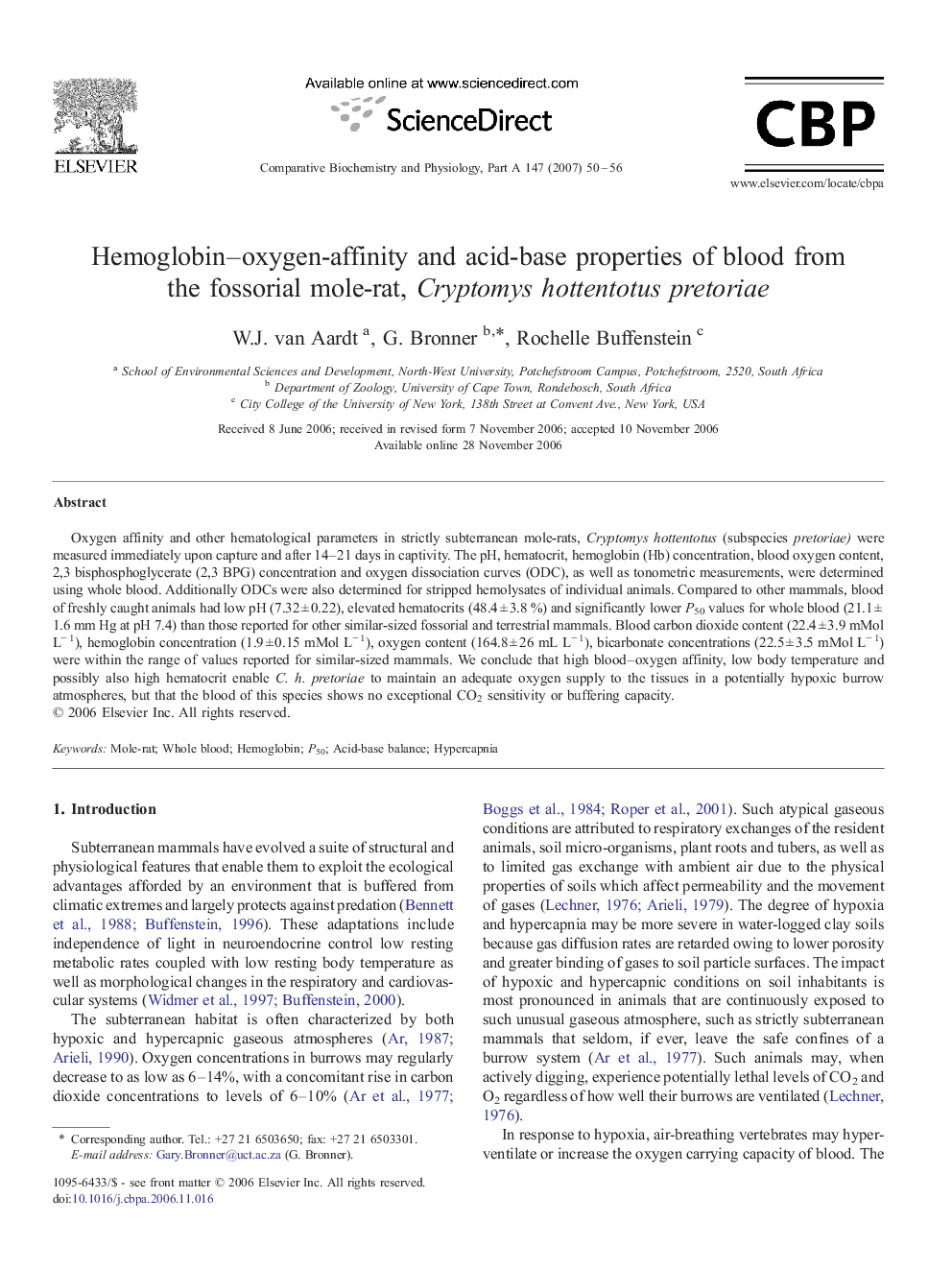| Article ID | Journal | Published Year | Pages | File Type |
|---|---|---|---|---|
| 1974835 | Comparative Biochemistry and Physiology Part A: Molecular & Integrative Physiology | 2007 | 7 Pages |
Oxygen affinity and other hematological parameters in strictly subterranean mole-rats, Cryptomys hottentotus (subspecies pretoriae) were measured immediately upon capture and after 14–21 days in captivity. The pH, hematocrit, hemoglobin (Hb) concentration, blood oxygen content, 2,3 bisphosphoglycerate (2,3 BPG) concentration and oxygen dissociation curves (ODC), as well as tonometric measurements, were determined using whole blood. Additionally ODCs were also determined for stripped hemolysates of individual animals. Compared to other mammals, blood of freshly caught animals had low pH (7.32 ± 0.22), elevated hematocrits (48.4 ± 3.8 %) and significantly lower P50 values for whole blood (21.1 ± 1.6 mm Hg at pH 7.4) than those reported for other similar-sized fossorial and terrestrial mammals. Blood carbon dioxide content (22.4 ± 3.9 mMol L− 1), hemoglobin concentration (1.9 ± 0.15 mMol L− 1), oxygen content (164.8 ± 26 mL L− 1), bicarbonate concentrations (22.5 ± 3.5 mMol L− 1) were within the range of values reported for similar-sized mammals. We conclude that high blood–oxygen affinity, low body temperature and possibly also high hematocrit enable C. h. pretoriae to maintain an adequate oxygen supply to the tissues in a potentially hypoxic burrow atmospheres, but that the blood of this species shows no exceptional CO2 sensitivity or buffering capacity.
